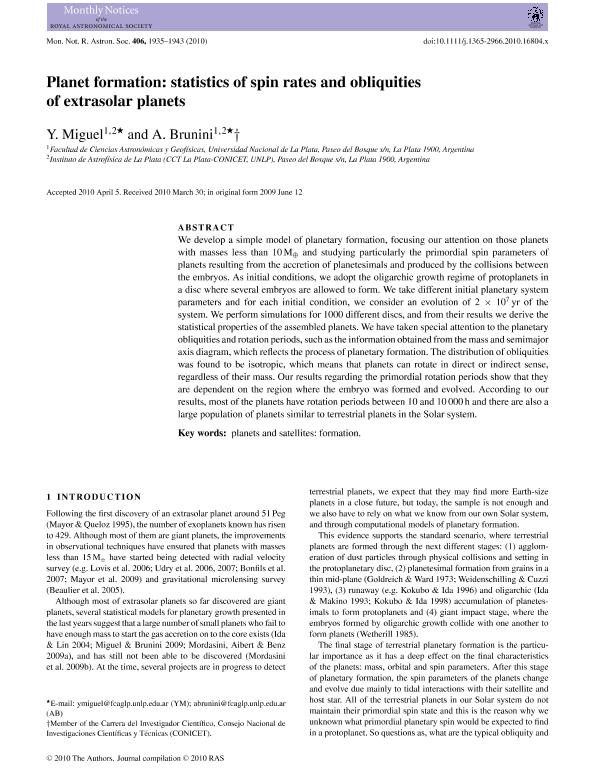Artículo
Planet formation: statistics of spin rates and obliquities of extrasolar planets
Fecha de publicación:
08/2010
Editorial:
Oxford University Press
Revista:
Monthly Notices Of The Royal Astronomical Society
ISSN:
0035-8711
Idioma:
Inglés
Tipo de recurso:
Artículo publicado
Clasificación temática:
Resumen
We develop a simple model of planetary formation, focusing our attention on
those planets with masses less than 10M⊕ and studying particularly the primordial
spin parameters of planets resulting from the accretion of planetesimals and produced by the collisions between the embryos. As initial conditions, we adopt the oligarchic growth regime of protoplanets in a disc where several embryos are allowed to form.
We take different initial planetary system parameters and for each initial condition,
we consider an evolution of 2x107 years of the system. We perform simulations for
1000 different discs, and from their results we derive the statistical properties of the
assembled planets. We have taken special attention to the planetary obliquities and
rotation periods, such as the information obtained from the mass and semi major
axis diagram, which reflects the process of planetary formation. The distribution of
obliquities was found to be isotropic, which means that planets can rotate in direct or indirect sense, regardless of their mass. Our results regarding the primordial rotation periods show that they are dependent on the region where the embryo was formed and evolved. According to our results, most of the planets have rotation periods between 10 and 10000 hours and there are also a large population of planets similar to terrestrial planets in the Solar System.
Palabras clave:
Planets
,
Planet Formation
,
Satellites Formation
,
Solar System Formation
Archivos asociados
Licencia
Identificadores
Colecciones
Articulos(IALP)
Articulos de INST.DE ASTROFISICA LA PLATA
Articulos de INST.DE ASTROFISICA LA PLATA
Citación
Miguel, Yamila; Brunini, Adrian; Planet formation: statistics of spin rates and obliquities of extrasolar planets; Oxford University Press; Monthly Notices Of The Royal Astronomical Society; 406; 3; 8-2010; 1935-1943
Compartir
Altmétricas




